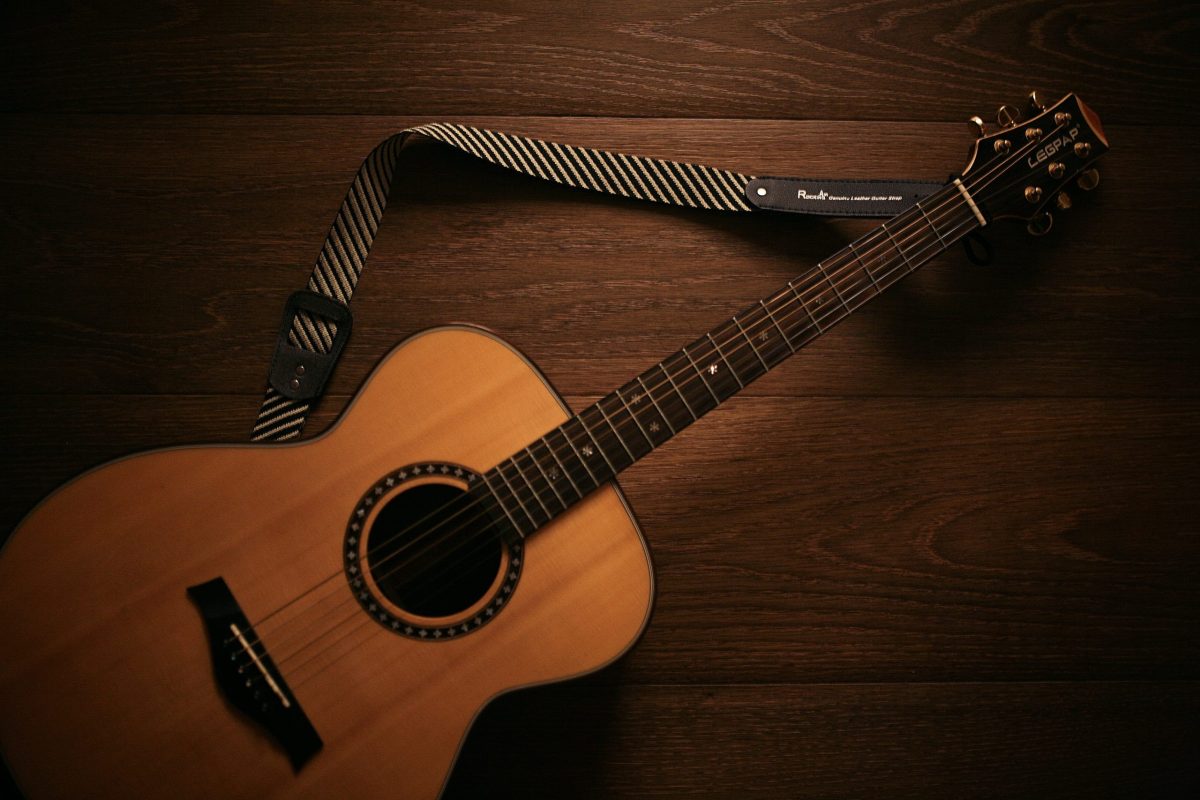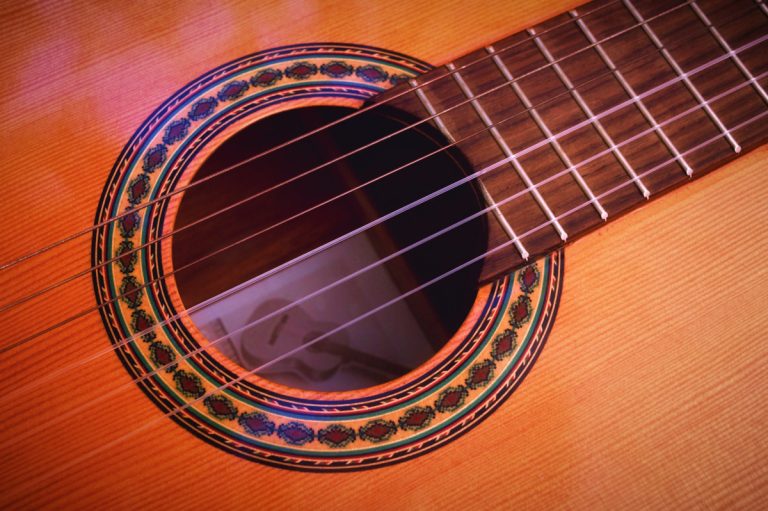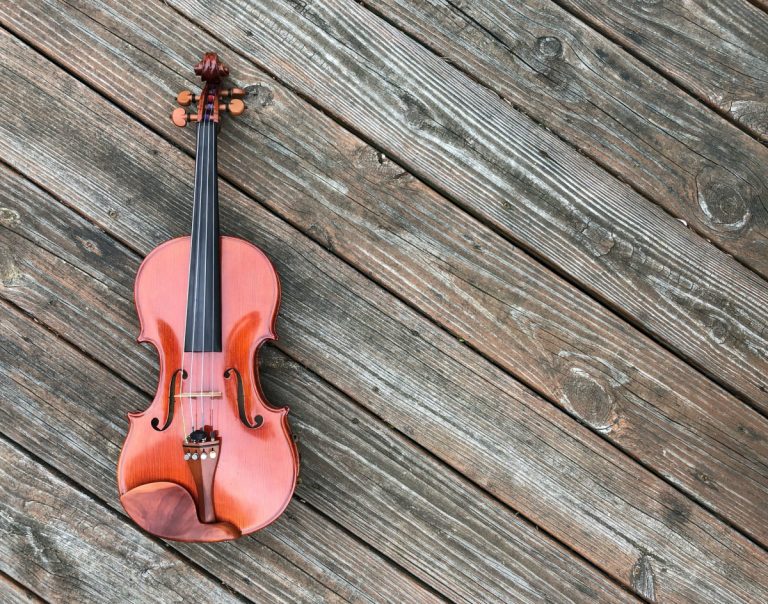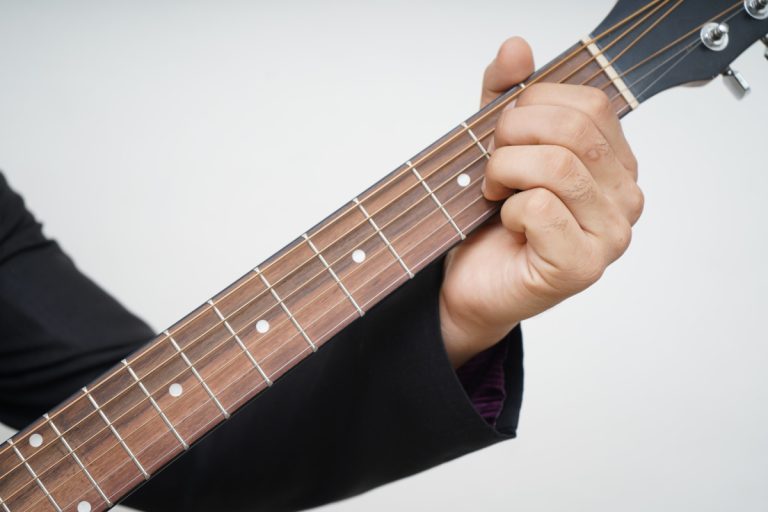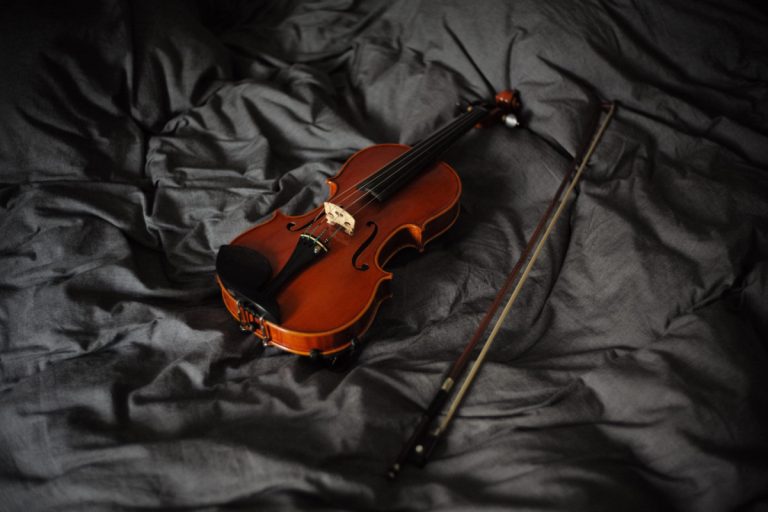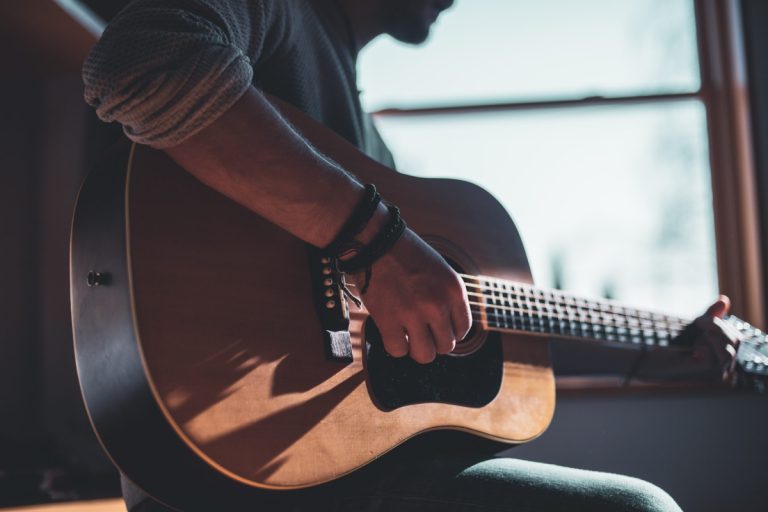Do you want to play like a pro without all the frustration? Playing guitar is a blast but can also be a major pain in the fingers when you’re just starting out. Struggling with finger placement and string pressure is a real challenge, but with an easy-play guitar, you can focus on mastering the basics and shredding like a boss without getting bogged down by your instrument.
In this article, we’ll show you the top options on the market so you can find the perfect guitar to help you level up your skills in no time.
Whether you’re a beginner or a seasoned pro looking for a simpler option, keep reading to find your perfect match.
Low Action vs High Action Guitars
Low-Action String Guitars
Low-action guitars have strings closer to the fretboard, making pressing them easier. This means you don’t have to use as much pressure to fret a note, which can be especially helpful for beginners still building their finger strength.
A low-action guitar can also be more comfortable for longer, as your fingers won’t get as tired as quickly.
Also, low-action guitars tend to have less string buzz, which can improve the overall sound quality of the guitar.
Disadvantages of Low-Action String Guitars
One of the main drawbacks is that they can be more prone to fret buzz, especially if the guitar is not set up properly. Fret buzz occurs when the string vibrates against the frets, creating a buzzing or rattling sound.
Another disadvantage of low-action guitars is that they can be more difficult to play when using a slide. The strings may be too close to the fretboard, making it harder to get a good sound when sliding the slide up and down the fretboard.
High-Action String Guitars
High-action guitars have strings further away from the fretboard, making them harder to press down. This means you’ll need to use more pressure to fret a note, which can be challenging for beginners or people with weaker fingers.
However, high-action guitars tend to have a clearer, more defined sound than mid-range and low-action acoustic guitars, as the strings are less likely to buzz against the frets.
Additionally, high-action guitars can be better suited for playing with a slide, as the strings are further away from the fretboard.
Disadvantages of High-Action String Guitar
Firstly, they can be harder to play. The larger distance between the strings and the fretboard can make pressing down on the strings more difficult, which can cause fatigue and discomfort. This can be especially challenging for beginners still building finger strength.
Secondly, high-action string guitars can also affect the tone of the guitar. The larger distance between the strings and the fretboard can cause the strings to vibrate less freely, resulting in a less resonant and less full sound. This can be especially noticeable when playing chords or strumming.
It can also cause intonation issues. Intonation refers to the accuracy of the pitch of each note when played on the guitar. When the action is too high, it can cause notes to sound out of tune, frustrating players trying to learn new songs or playing with others.
Choosing the Right Acoustic Guitar
Consider a few things before purchasing if you’re looking for an acoustic guitar that’s easy to play. In this section, we’ll cover the most important factors to consider when choosing the right acoustic guitar for you.
Size
The size of an acoustic guitar can make a big difference in how easy it is to play. Generally, smaller guitars are easier to play than larger ones.
If you’re a beginner or have smaller hands, you may want to consider a smaller acoustic guitar size first. Parlor and travel guitars are good options for those who want a smaller instrument.
Wood
Mahogany and sapele are popular choices for acoustic guitars’ backs and sides. These woods are known for their warm, balanced tone and are often used in mid-priced guitars.
Spruce and cedar are also popular choices for the top of an acoustic guitar’s body. Spruce is known for its bright, clear tone, while cedar has a warmer, mellow sound.
Brand
There are many guitar manufacturers, but some are known for making particularly easy guitars. Yamaha, Ibanez, Taylor, Martin, and Fender are popular brands that make guitars for players of all skill levels.
These brands are known for their quality craftsmanship and attention to detail, which can make a big difference in how easy a guitar is to play.
Features for Affordable Beginner Acoustic Guitars
Looking for an affordable beginner acoustic guitar that is easy to play and has a great sound? Look no further! In this section, we will cover some of the best affordable beginner acoustic guitars that are perfect for those just starting out on their musical journey.
Design
When it comes to design, there are a few things to consider. The guitar’s body style is important, as it can affect the sound and playability. A cutaway design can make it easier to reach higher frets, while a dreadnought body style can offer a big, full sound.
The materials used in the guitar’s construction can also impact the sound. A solid spruce top and mahogany back and sides are common choices for beginner guitars, as they offer a balanced tone and are affordable.
Playability
Playability is one of the most important factors to consider when choosing a beginner guitar. The action, or the distance between the strings and the fretboard, should be low enough to make pressing down on the strings easy.
The fretboard and nut should also be comfortable to play, with smooth edges and a comfortable shape. For those with smaller hands, a guitar with a smaller neck profile can be easier to play.
Yamaha FG800
The Yamaha FG800 is a versatile and affordable guitar that is perfect for beginners. It features a solid spruce top and a nato/okume back and sides, which provide a very warm sound, and balanced tone. The neck is made from nato, which is a durable wood that is easy to play. The guitar has a comfortable neck profile and a smooth fretboard, making it easy to play chords and melodies.
Fender CD-60S
The Fender CD-60S is another great option for beginners. It features a solid spruce top and mahogany back and sides, which provide a rich and full sound. The guitar has a comfortable neck profile and a rosewood fretboard, which is smooth and easy to play. The build quality of this guitar is excellent, and it has received great reviews from beginner guitarists.
Epiphone DR-100
The Epiphone DR-100 is an affordable and well-built guitar that is perfect for those just starting out. It features a select spruce top and mahogany back and sides, which provide a warm and balanced tone. The guitar has a comfortable neck profile and a rosewood fretboard, which is smooth and easy to play. The DR-100 also comes with a limited lifetime warranty, which is a great bonus for beginners.
Accessories
When purchasing a beginner guitar, it’s important to consider the accessories that come with it. A gig bag or case can help protect your guitar when you’re on the go, while a clip-on tuner can make tuning your guitar a breeze. Some guitars also come with extra strings, picks, and straps, which can be helpful for beginners.
In conclusion, there are many affordable beginner acoustic guitars available that are easy to play and have a great sound. When choosing a best beginner acoustic guitar, consider the design, playability, and accessories that come with it. With the right guitar and a little practice, you’ll be strumming chords and playing melodies in no time!
Top 7 Easiest Acoustic Guitars for Child Beginners
If you are looking for the best beginner guitar or an acoustic guitar that is easy to play and perfect for a child beginner, then you have come to the right place. Here are the top 7 easiest acoustic guitars for child beginners that will make learning to play the guitar a breeze.
- Yamaha FG JR1 3/4 Size Acoustic GuitarNameofProductSUBTITLEPerfect For:Features:Other Info:Pros:Cons:The TedScore: /10
The Yamaha FG JR1 is a 3/4 size acoustic guitar that is perfect for child beginners. It has a spruce top, meranti back and sides, and a nato neck, which makes it lightweight and easy to play. The guitar also features a rosewood fingerboard and bridge, which adds to its overall playability.
- Fender FA-115 Dreadnought Acoustic Guitar
The Fender FA-115 is a dreadnought acoustic guitar that is perfect for child beginners. It has a laminated spruce top, laminated mahogany back and sides, and a nato neck, which makes it lightweight and easy to play. The guitar also features a rosewood fingerboard and bridge, which adds to its overall playability.
- Epiphone DR-100 Acoustic Guitar
The Epiphone DR-100 is an acoustic guitar that is perfect for child beginners. It has a spruce top, mahogany back and sides, and a mahogany neck, which makes it lightweight and easy to play. The guitar also features a rosewood fingerboard and bridge, which adds to its overall playability.
- Yamaha FG800 Acoustic Guitar
The Yamaha FG800 is an acoustic guitar that is perfect for child beginners. It has a solid spruce top, nato back and sides, and a nato neck, which makes it lightweight and easy to play. The guitar also features a rosewood fingerboard and bridge, which adds to its overall playability.
- Jasmine S35 Acoustic Guitar
The Jasmine S35 is an acoustic guitar that is perfect for child beginners. It has a spruce top, nato back and sides, and a nato neck, which makes it lightweight and easy to play. The guitar also features a rosewood fingerboard and bridge, which adds to its overall playability.
- Ibanez AW54OPN Artwood Acoustic Guitar
The Ibanez AW54OPN is an acoustic guitar that is perfect for child beginners. It has a solid mahogany top, mahogany back and sides, and a mahogany neck, which makes it lightweight and easy to play. The guitar also features a rosewood fingerboard and bridge, which adds to its overall playability.
- Fender CD-60S Acoustic Guitar
The Fender CD-60S is an acoustic guitar that is perfect for child beginners. It has a solid spruce top, mahogany back and sides, and a mahogany neck, which makes it lightweight and easy to play. The guitar also features a rosewood fingerboard and bridge, which adds to its overall playability.
In conclusion, these are the top 7 easiest acoustic guitars for child beginners. Each guitar has its own unique features and benefits, but all of them are easy to play and perfect for a child who is just starting to learn the guitar.
Top 7 Easiest Acoustic Guitars for Adult Beginners
Learning how to play the guitar can be a challenging task, especially a beginner’s acoustic guitar for adults who are just starting. However, with the right guitar, the learning process can be made easier and more enjoyable. Here are the top 7 easiest acoustic guitars for adult beginners:
1. Fender CD-60SCE Dreadnought
The Fender CD-60SCE Dreadnought is an affordable and versatile guitar that is perfect for beginners. It has a solid spruce top, which produces a clear and bright sound. The guitar also features a cutaway design, making it easier to reach the higher frets.
2. Yamaha FG800
The Yamaha FG800 is a great entry-level guitar that is easy to play and produces a warm and balanced tone. It has a solid spruce top and nato back and sides, which provide a rich and resonant sound. The guitar also features a slim neck profile, making it easier to play chords and scales.
3. Taylor GS Mini
The Taylor GS Mini is a compact guitar that is perfect for beginners who are looking for a smaller size. It has a solid spruce top and sapele back and sides, which produce a bright and clear sound. The guitar also features a slim neck profile, making it easier to play.
4. Ibanez AW54CEOPN Artwood Dreadnought
The Ibanez AW54CEOPN Artwood Dreadnought is a great guitar for beginners who are looking for a classic and versatile sound. It has a solid mahogany top and mahogany back and sides, which produce a warm and rich tone. The guitar also features a cutaway design, making it easier to reach the higher frets.
5. Martin LX1E Little Martin
The Martin LX1E Little Martin is a small and lightweight guitar that is perfect for beginners who are looking for a portable option. It has a solid Sitka spruce top and mahogany back and sides, which produce a clear and balanced sound. The guitar’s body is also features a slim neck profile, making it easier to play.
6. Epiphone DR-100
The Epiphone DR-100 is an affordable and easy-to-play guitar that is perfect for beginners. It has a select spruce top and mahogany back and sides, which produce a warm and rich tone. The guitar also features a slim neck profile, making it easier to play chords and scales.
7. Washburn WD10SCE
The Washburn WD10SCE is a great guitar for beginners who are looking for a versatile and easy-to-play option. It has a solid spruce top and mahogany back and sides, which produce a warm and balanced tone. The guitar also features a cutaway design, making it easier to reach the higher frets.
In conclusion, choosing the right guitar is essential for beginners who are just starting to learn how to play. The guitars listed above are all great options that are easy to play and produce a great sound.
Great Accessories for Beginner Acoustic Guitarists
When you’re just starting out on the guitar, it can be tough to know which accessories you need and which ones you can do without. In this section, we’ll cover some of the essential accessories that every beginner acoustic guitarist should have.
Guitar Tuner
One of the most important accessories for any guitarist, beginner or pro, is a guitar tuner. A tuner helps you keep your guitar in tune, which is crucial for sounding good and making progress in your playing.
There are many different types of tuners available, from clip-on tuners that attach to your guitar’s headstock to pedal tuners that sit on the floor. Some tuners are more accurate than others, so it’s worth investing in a good one if you can.
Picks
Picks, also known as plectrums, are small pieces of plastic or other material that you use to strum or pick the strings of your guitar. They come in many different shapes, sizes, and thicknesses, so it’s worth trying out a few different kinds to see what works best for you.
Guitar Strap
If you’re planning on playing your guitar while standing up, you’ll need a guitar strap to hold it in place. Straps come in many different materials and designs, so you can choose one that matches your style.
Extra Strings
Guitar strings can break at any time, so it’s always a good idea to have a few extra sets on hand. Strings come in different gauges, or thicknesses, so make sure you get the right ones for your guitar.
Capo
A capo is a device that you attach to your guitar’s neck to change the pitch of the strings. This can be useful if you want to move instruments or play a song in a different key without having to learn new chords.
Guitar Case or Gig Bag
If you’re planning on taking your guitar out of the house, you’ll need a case or gig bag to protect it from bumps and scratches. Cases are more protective but also bulkier, while gig bags are lighter and easier to carry.
Guitar Stand
A guitar stand is a convenient way to store your guitar when you’re not playing it. It keeps the guitar off the ground and makes it easy to grab when you’re ready to play.
In conclusion, these are some of the most important accessories for beginner acoustic guitarists. By investing in these essential items, you’ll be well on your way to becoming a great guitar player.
Tips for Learning to Play the Acoustic Guitar
Learning to play the acoustic guitar can be a fun and rewarding experience. However, it can also be a challenging and frustrating one if you don’t have the right approach. Here are some basic guitar techniques and some tips to help you get started and make the learning process easier:
1. Choose the Right Guitar
When it comes to learning to play the acoustic guitar, it’s important to choose the right guitar. Look for a guitar that’s comfortable to hold and play, with a good sound quality. You don’t need to spend a lot of money on a guitar when you’re just starting out, but investing in a quality instrument can make a big difference in your playing experience.
2. Start with the Basics
When you’re first starting out, it’s important to focus on the basics. Learn how to hold the guitar, how to tune it, and how to play some basic chords. Practice your chord transitions and strumming patterns until you feel comfortable with them.
3. Practice Consistently
Consistency is key when it comes to learning to play the acoustic guitar. Try to practice for at least 30 minutes every day, even if it’s just a quick practice session. This will help you build muscle memory and improve your playing skills over time.
4. Take Lessons
Taking lessons from a professional guitar teacher can be a great way to improve your skills and get feedback on your playing. Look for a teacher who has experience teaching beginners and who can help you develop good habits and techniques.
5. Use Online Resources
There are many online resources available to help you learn to play the acoustic guitar. Look for instructional videos, online courses, and forums where you can connect with other guitar players and get advice and feedback.
6. Practice with a Metronome
Using a metronome can help you improve your timing and rhythm when playing the guitar. Start by practicing simple chord progressions and strumming patterns with the metronome, gradually increasing the tempo as you become more comfortable.
Learning to play the acoustic guitar takes time and practice, but with the right approach, anyone can become a skilled player. Use these guitar tricks and tips to help you get started and stay motivated as you work towards your goals.
Easiest Acoustic Guitar To Play: A Recap
Are you a beginner looking for an acoustic guitar that’s easy to play? Look no further! We’ve compiled a list of the easiest and best acoustic guitars ever to play, perfect for beginners who want to make learning the guitar a breeze.
First on our list is the Fender CD-60SCE. This well-made guitar boasts a low action, making it effortless to play. It also features excellent onboard electronics courtesy of the in-built Fishman pickup, and the built-in tuner is a great bonus. The CD-60SCE is a beautiful guitar that sounds fantastic and is available for under £500.
Next on our list is the Yamaha F335 Acoustic Guitar. It sports a rosewood fretboard and bridge, providing fullness and clarity with good balance. It’s scaled down to a 25″ scale length, making it somewhat easier to play. The F335 is a classic dreadnought guitar with a laminate spruce top with meranti back and sides, perfect for beginners who want a guitar that’s easy to play and sounds great.
Finally, we have the Ibanez AW54. This guitar delivers a balanced, rounded tone thanks to the mahogany. Like many of the entry-level guitars in our guide, it’s enough to keep more experienced acoustic guitarists happy. The Ibanez AW54 also comes with an Ibanez preamp, Fishman pickup, and a dual-band equalizer.
Conclusion
We hope this article has helped you find the easiest acoustic guitar to play as a beginner. Remember, the right guitar can make all the difference when learning to play. So, whether you choose the Fender CD-60SCE, Yamaha F335 or Ibanez AW54, we wish you the best of luck on your first acoustic guitar-playing journey. Happy strumming!
P.S. If you still have trouble deciding, why not try them all? Who knows, you might find your perfect match!
FAQ’s
What is the easiest guitar to play?
The easiest guitar to play is the Fender Stratocaster due to its body shape and design, which provides some advantages for beginners. Even if it’s not a Fender brand whose guitar features the Stratocaster, the Stratocaster body shape and design in and of itself make it easier to play.
What is easiest on the fingers for acoustic guitar?
The easiest type of acoustic guitar strings on the fingers is flat wound strings, which are wound with a flat wire instead of a round wire, as the name suggests. You can check out examples of flatwound strings on ZZounds.
Which acoustic guitar brand is best for beginners?
Yamaha is one of the best acoustic guitar brands for beginners, as they offer a wide range of affordable and high-quality acoustic guitars for beginners that are easy to play and sound great. Another good option is Fender, which offers a great selection of beginner-friendly electric guitars too.
Why aren’t there more Low Action Guitars?
There are no more very low action acoustic full-action guitars because it can be challenging to maintain low action without causing buzzing or other issues that can affect the guitar’s playability and sound. Additionally, some players prefer higher action for certain styles of music or personal preference.
